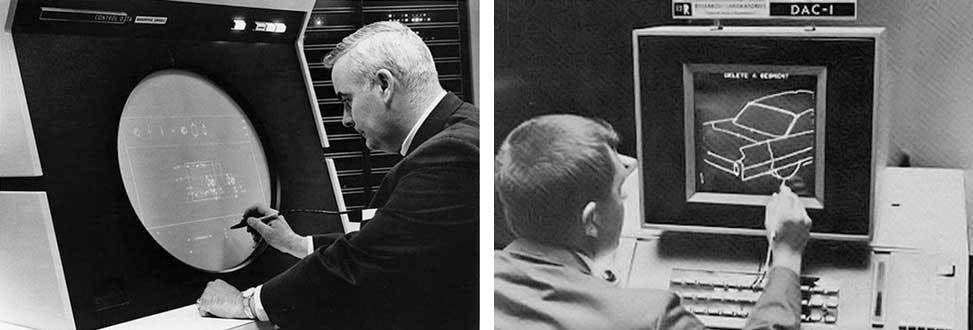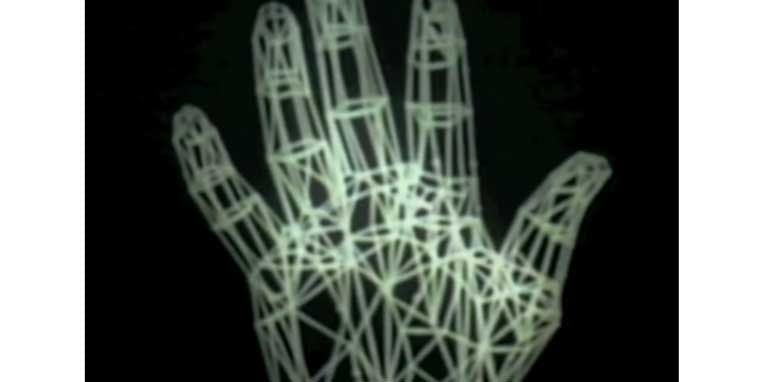



Feature Story
More feature stories by year:
2024
2023
2022
2021
2020
2019
2018
2017
2016
2015
2014
2013
2012
2011
2010
2009
2008
2007
2006
2005
2004
2003
2002
2001
2000
1999
1998
Return to: 2024 Feature Stories
CLIENT: JON PEDDIE RESEARCH![]()
May 10, 2024: Electronic Design
While it's no longer the premier computer graphics application, CAD is as important as ever.
What you’ll learn:
The computer graphics industry started with the development of the first computer-aided design (CAD) programs in the early 1960s. The 3D wireframe and 2D layout programs that dominated at the time are the foundation of everything computer graphics. Photographs from the era show engineers sitting in front of a large, flat-faced CRT using a light pen to do CAD.
In the early days, some brave souls developed their own CAD programs. For instance, in 1972, Ed Catmull made the first polygonal 3D computer-animated CG film of a hand with a 3D modeling and animation program he wrote. It could reproduce a disembodied hand on a screen and make it move.
CAD’s importance in checking, tweaking, and rendering solid models for accurate visualization remains crucial. While it may be considered mundane, CAD still forms the foundation for computer graphics.
In computer graphics, the objects used to create scenes and people are based on a Euclidean drawing system, the basis of which could be a CAD program. However, in computer graphics, such 3D systems have since become known as modeling programs. The 3D objects are the foundation for the computer graphics model.
The computer-aided design industry has undergone significant transformations since it started taking shape in the late 1950s and early 1960s. The advent of CAD in the 1960s ushered in an era of automation that persists today. However, CAD is now just one element within a progressively intricate system of software tying the real and virtual worlds together.
 The first interactive CAD system (right), the DAC-1.
The first interactive CAD system (right), the DAC-1.
After all of the modeling work is done in a CAD project, whether it’s the design of a skyscraper, a car, an airplane, or an alien monster, it must be checked to see if it has any cracks—vertices that didn’t quite connect correctly. That’s done in a first-pass visualization, and it’s basically a manual checking process performed by a human who rotates and tilts the model looking for imperfections in the polygon alignments—cracks of light show through if they don’t.
When the model is reliable and correct, it’s ready for final visualization, which involves the type of ray and path tracing that graphics processing units (GPUs) excel at. Sometimes, prior to the physically accurate rendering step, the engineering, design, and marketing departments will look over the design in a CAVE or with a VR headset. Tweaks are made during this stage. A floor is added or removed from a building; a steering wheel is raised, lowered, or moved sideways; a space alien has a claw added or removed.
All that tweaking involves moving vertices in the CAD model. A critical part of the process is making sure everything the vertex, ranging from its material and color to stress factors and weight, properly interacts with peripheral vertices and their environmental data.
It’s all modeling, say the visualization specialists. It’s all CAD, say the mechanical engineers and architectural and construction engineers. It’s all of the above, and all that matters is the results.
Design, modeling, and engineering are rapidly evolving to adopt the latest technological innovations, ranging from cloud-based workflows to artificial intelligence (AI) and machine learning (ML). Baking AI into CAD has improved the richness of the worlds being created and sped up the creation of such worlds, as well as the objects, vehicles, and people within them. These advances are also feeding into the future of digital twins of various systems in the real world, which could have significant implications for CAD.
Integrating AI will profoundly change the CAD arena, potentially decreasing the number of human roles involved. However, there’s optimism that new opportunities will emerge, focusing on roles where individuals teach machines to perform more complex tasks. While uncertainties persist, the evolving landscape promises swift changes and opportunities for those in the professional realm.
 The first polygonal 3D computer-animated hand used a wireframe construction.
The first polygonal 3D computer-animated hand used a wireframe construction.
What made a GPU so valuable was the integration of the transformation and lighting engine. The transformation engine is what manages the vertices and their metadata. It’s the front of the GPU pipeline and, therefore, it’s also the front of the computer graphics pipeline.
CAD no longer holds the same weight it once did in the world of computer graphics. It’s considered mundane and even trivial. While CAD suppliers used to have a large presence at the annual Siggraph conference, times have changed, and now many of the largest companies in this market have organized their own conferences centered around their users.
Modeling is the preferred term for CAD in the modern age. But underneath every front-end modeler is a CAD engine—homegrown or licensed. At the other end of a computer graphics pipeline is the ray-tracing engine—also homegrown or licensed. But ray tracing could never have photorealistic accuracy if it didn’t have a robust CAD model to base its light projections and bounces on.
So, according to a new research report from Jon Peddie Research, CAD software isn’t going anywhere. It’s widely used for design documentation and mechanical design. CAD is also indispensable as a modern, automated alternative to manual drafting, and it can aid manufacturing and development by offering detailed product diagrams, material information, tolerances, dimensions, and other essential specifications.
As a result, the CAD software market is forecast to reach $16 billion by 2027, driven mainly by the increased use of digital-twin systems, according to the report. From 2024 to 2027, the demand for CAD solutions is expected to grow at a compound annual growth rate of close to 7%, as it climbs to an estimated value of more than $20 billion by 2033.
The major players in the market are Autodesk, Dassault Systèmes, and Siemens, which control over 65% of the market, and the big ones are getting bigger over time. Still, secondary players such as Bentley, Hexagon, and PTC are figuring out ways to carve out another 20% of the pie. The rest of the market is shared among more than 15 other companies.
While CAD technology lacks the prestige it once enjoyed, it’s no understatement to say that the digital revolution would not have been possible without it. It’s still a centerpiece of the modern digital world.
Return to: 2024 Feature Stories